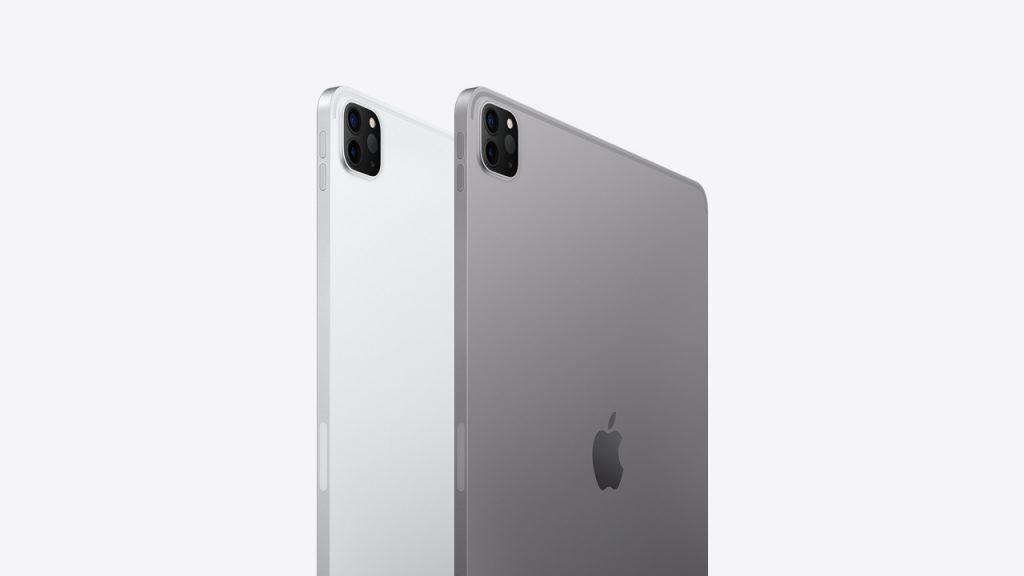The standout feature of the upcoming iPad Pro models is the addition of a second front-facing camera, designed to support both portrait and landscape orientations. Bloomberg’s Mark Gurman reports that this dual-camera system will allow users to capture photos and conduct video calls without worrying about awkward angles, regardless of how they hold the device. The current M4 iPad Pro, released in May 2024, shifted its single front camera to the landscape edge, a move that improved video calls in that orientation but left portrait users looking off-center. The new setup resolves this by ensuring optimal framing in either mode.
This change responds directly to user feedback about video conferencing challenges. Whether you’re joining a FaceTime call for work or snapping a selfie for social media, the dual cameras promise sharper, better-aligned visuals. The system builds on Apple’s earlier efforts, like the 2022 iPad’s landscape camera repositioning, to prioritize usability in diverse scenarios. For professionals using the iPad Pro as a laptop replacement or creatives relying on it for video content, this upgrade could streamline workflows and enhance output quality.
M5 Chip: Powering the Future of Productivity
The heart of the new iPad Pro will be Apple’s M5 chip, a next-generation processor expected to deliver a performance leap over the M4. According to Apple supply chain analyst Ming-Chi Kuo, the M5 iPad Pro models entered mass production in the second half of 2025, aligning with Apple’s roughly 18-month update cycle for its premium tablets. The M5 chip is anticipated to boost CPU and GPU performance, enabling faster rendering for graphics-intensive tasks like video editing, 3D modeling, and augmented reality (AR) applications.
The M4 chip already set a high bar, powering the 2024 iPad Pro’s OLED display and slimmed-down chassis with improved thermal efficiency. The M5 is expected to refine this further, potentially integrating enhanced Neural Engine capabilities to support Apple Intelligence features like advanced image processing and on-device AI tasks. For users, this translates to smoother multitasking, quicker app launches, and a more responsive experience when pushing the iPad Pro to its limits—whether editing 4K video or running complex AR simulations.
Building on a Refined Design
Last year’s iPad Pro introduced a thinner, design with an OLED display, marking one of the lineup’s most significant overhauls in years. This year’s model is expected to maintain that sleek aesthetic, with the dual cameras and M5 chip as the primary upgrades. While rumors of slimmer bezels or other design tweaks have surfaced, it’s unclear if these will materialize in 2025 or be reserved for future iterations, such as a foldable iPad Pro slated for 2027 or later. The focus for now seems to be on functional enhancements that directly impact user experience.
The dual-camera system, in particular, aligns with Apple’s push to make the iPad Pro a versatile tool for both work and play. By supporting both orientations, it caters to users who switch between portrait sketching and landscape video calls or presentations. The M5 chip, meanwhile, ensures the device remains a powerhouse for professionals, from graphic designers to software developers, who rely on its laptop-like capabilities.
Why It Matters for Users
The dual front cameras address a practical pain point: the frustration of misaligned video calls or selfies when rotating the device. This is especially relevant for users who pair the iPad Pro with a Magic Keyboard, which positions the tablet in landscape mode, or those who use it in portrait for sketching or note-taking. The M5 chip, meanwhile, future-proofs the device for increasingly demanding apps and workflows, particularly in creative industries where high-performance hardware is non-negotiable.
These upgrades also position the iPad Pro as a stronger competitor in the premium tablet market. While rivals like Samsung’s Galaxy Tab series offer robust hardware, Apple’s ecosystem—bolstered by iPadOS 26’s Mac-like windowing system and new apps like Journal and Games—gives it an edge in software integration. The dual cameras could set a new standard for tablet video capabilities, potentially pressuring competitors to follow suit.
A Broader Context: Apple’s 2025 Lineup
The iPad Pro isn’t the only device getting a boost this year. Apple’s iPhone 17 series, expected to launch around the same time, will feature an ultra-thin iPhone 17 Air, upgraded 24-megapixel front cameras across models, and redesigned Pro models with aluminum frames. The Vision Pro and select Mac models are also slated to receive the M5 chip, signaling Apple’s commitment to unifying its high-end devices with cutting-edge silicon. This cohesive strategy ensures that users moving between iPhone, iPad, and Mac experience seamless performance and compatibility.
For iPad Pro buyers, the timing is notable. With the M4 models still fresh from May 2024, those who recently purchased may not feel the need to upgrade. However, for users with older models or those prioritizing video call quality and peak performance, the M5 iPad Pro could be a compelling investment. Pricing is expected to remain in line with current models, starting at $999 for the 11-inch and $1,299 for the 13-inch, though exact figures are yet to be confirmed.
Looking Ahead
Apple’s decision to focus on dual front cameras and the M5 chip reflects a practical approach to innovation, addressing real-world user needs while pushing performance boundaries. The iPad Pro continues to evolve as a device that blurs the line between tablet and laptop, offering unmatched versatility for professionals and creatives alike. As the September or October launch window approaches, all eyes will be on how these upgrades translate to real-world use—and whether Apple has more surprises in store.
